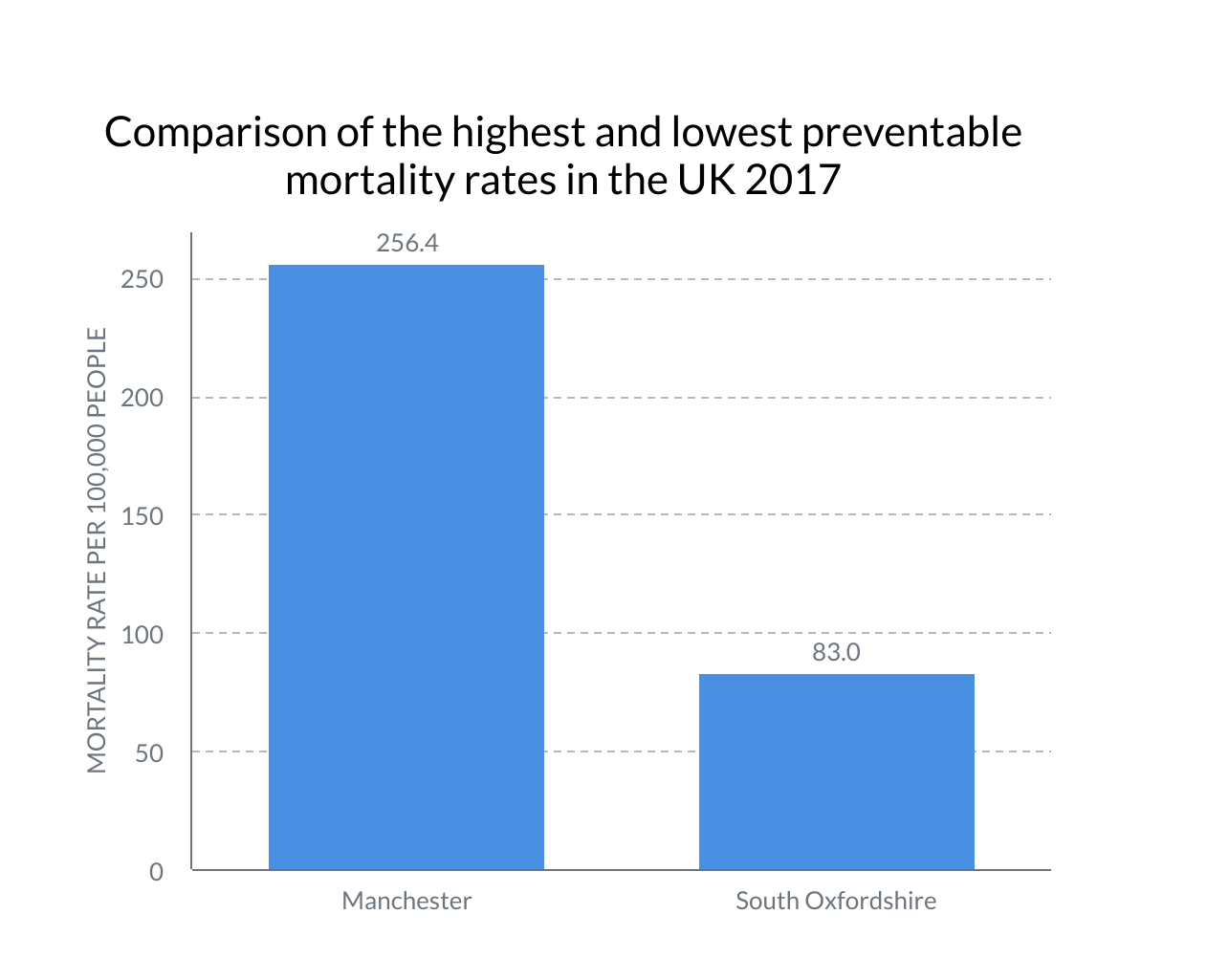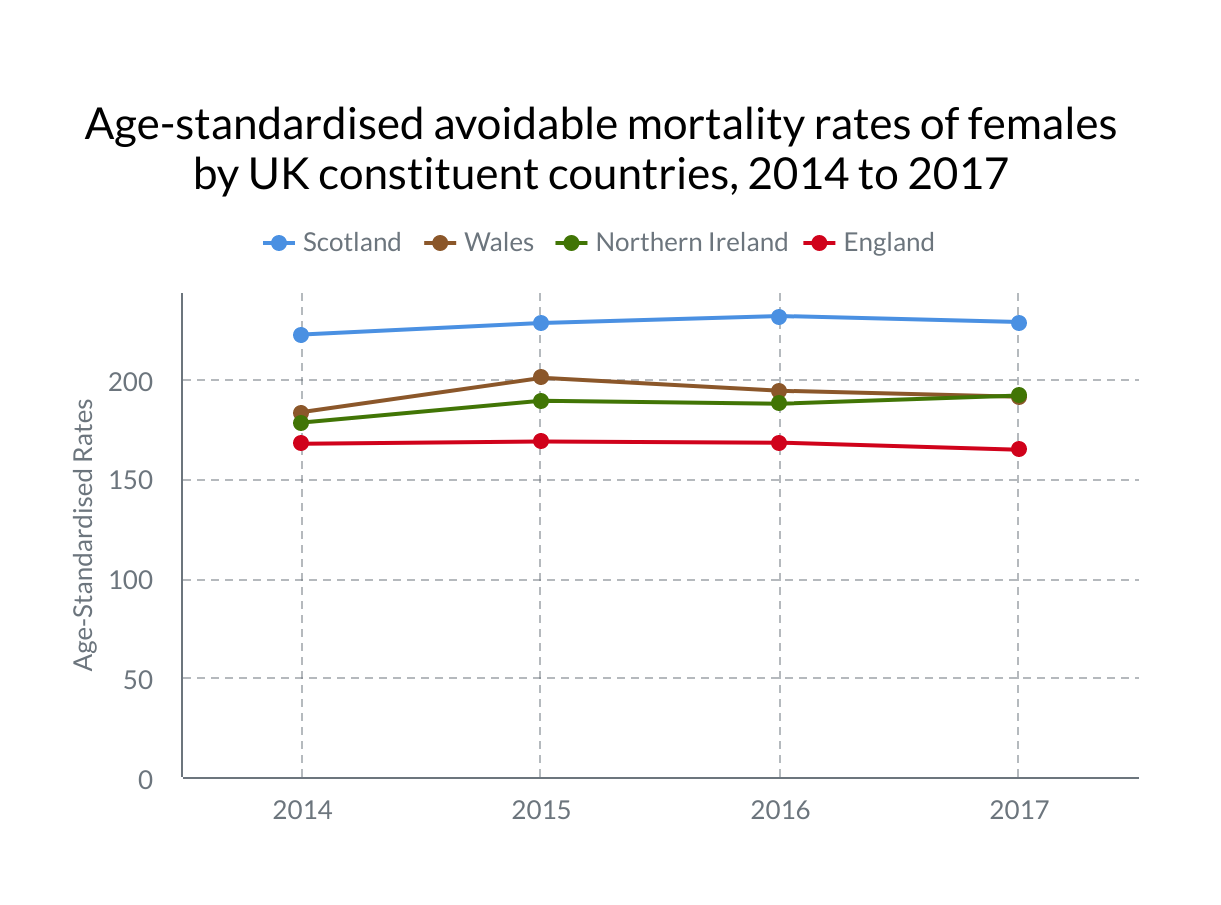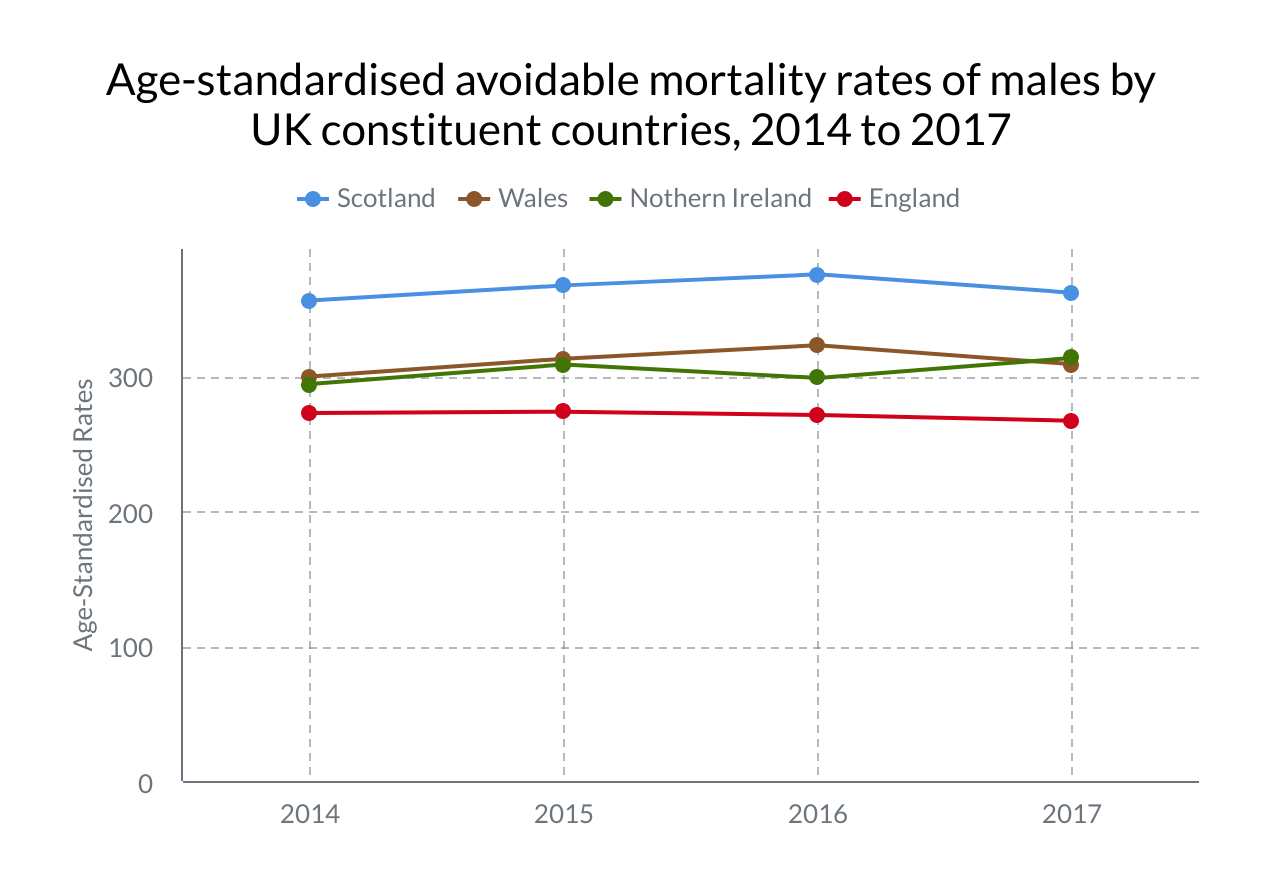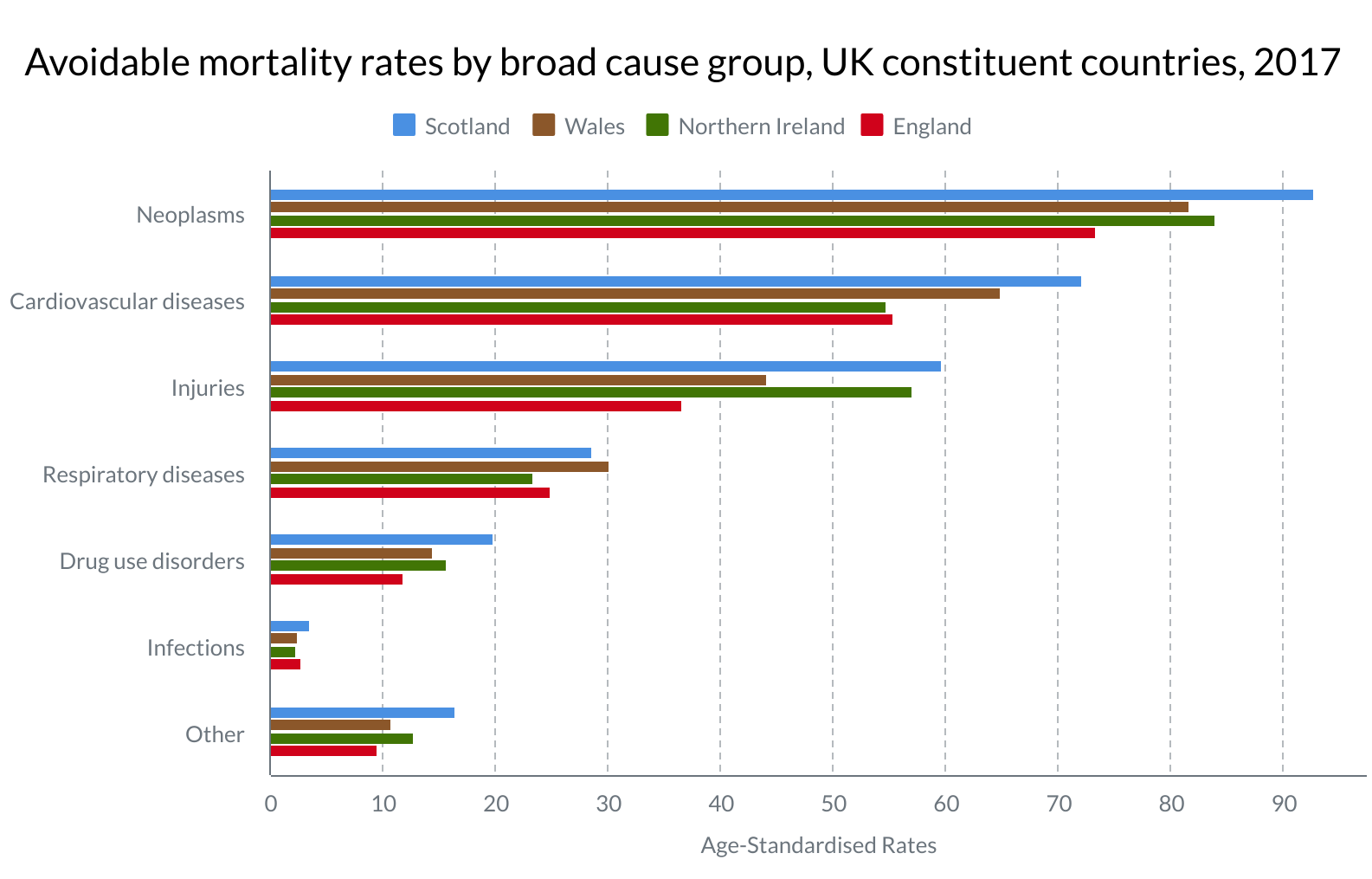New figures show that between 2015 and 2017, Manchester had the highest preventable mortality rate for women with 256.4 deaths per 100,000 females.
Compare this with South Oxfordshire, who had the lowest with 83.0 deaths per 100,000 females, and you can clearly see that the city which once fought for the women’s vote might need to reconsider their rights to health care and interventions.
 Mortality rates for females between 2015 and 2017 are said to be consistently higher in Scotland and lower in the UK as a whole, with Wales mortality rate being the second highest.
Mortality rates for females between 2015 and 2017 are said to be consistently higher in Scotland and lower in the UK as a whole, with Wales mortality rate being the second highest.

 The Office for National Statistics (ONS) has said that in 2017 approximately 23% of all deaths in the UK were considered avoidable. That is 141,313 deaths out of 607,172.
The Office for National Statistics (ONS) has said that in 2017 approximately 23% of all deaths in the UK were considered avoidable. That is 141,313 deaths out of 607,172.
But why?
Neoplasms (cancer and other noncancerous tissue growths) were the leading cause of avoidable mortality in the UK in 2017. This is alongside cardiovascular disease, infections, drug use disorders, respiratory diseases and injuries.
In 2017, Scotland had the highest avoidable mortality rates for six out of the seven categories with results that were significantly higher than the others.
Wales, on the other hand, had the highest avoidable rate for respiratory diseases with 30.1 deaths per 100,000 population, a statistically significant increase from 2014.
Yet, a report published in 2015 by the UK’s Independent Fact-checking Charity was questioned whether sub-standard care and staffing at weekends is responsible for thousands of deaths.
Charity was questioned whether sub-standard care and staffing at weekends is responsible for thousands of deaths.
The conclusion was that there was no way to be sure, though figures showed that an estimated 6,000 to 11,000 excess deaths happened after admission on a Friday on the basis that some services slow down on a Friday evening creating a backlog for the following Monday.
They also said weekend patients were 10% more likely to die than weekday patients. The mortality rate was 4.9% for weekday emergency patients and 5.2% for weekend patients.
However, the ONS has said the avoidable mortality rate in the UK has significantly decreased since 2016 from 228.7 deaths per 100,000 people to 224.7 deaths per 100,000 population in 2017.
Males accounted for 60% of the avoidable deaths in 2017, meaning the male mortality rate was statistically higher at 280.0 deaths per 100,000 males compared with 172.9 deaths per 100,000 females.
Overall, Blackpool held the highest rate of preventable mortality for males with 415.2 deaths per 100,000 males compared to Surrey Heath who had the lowest rate.
Updates are released every year referring to information from two years prior.
When discussing avoidable deaths, it is important to recognise these definitions:
- Amenable (treatable) mortality is when deaths could be avoided through timely and effective healthcare.
- Preventable mortality is when deaths could be avoided by public health interventions.
- Avoidable mortality is when deaths are amenable, preventable or both (where each death is only counted once).



